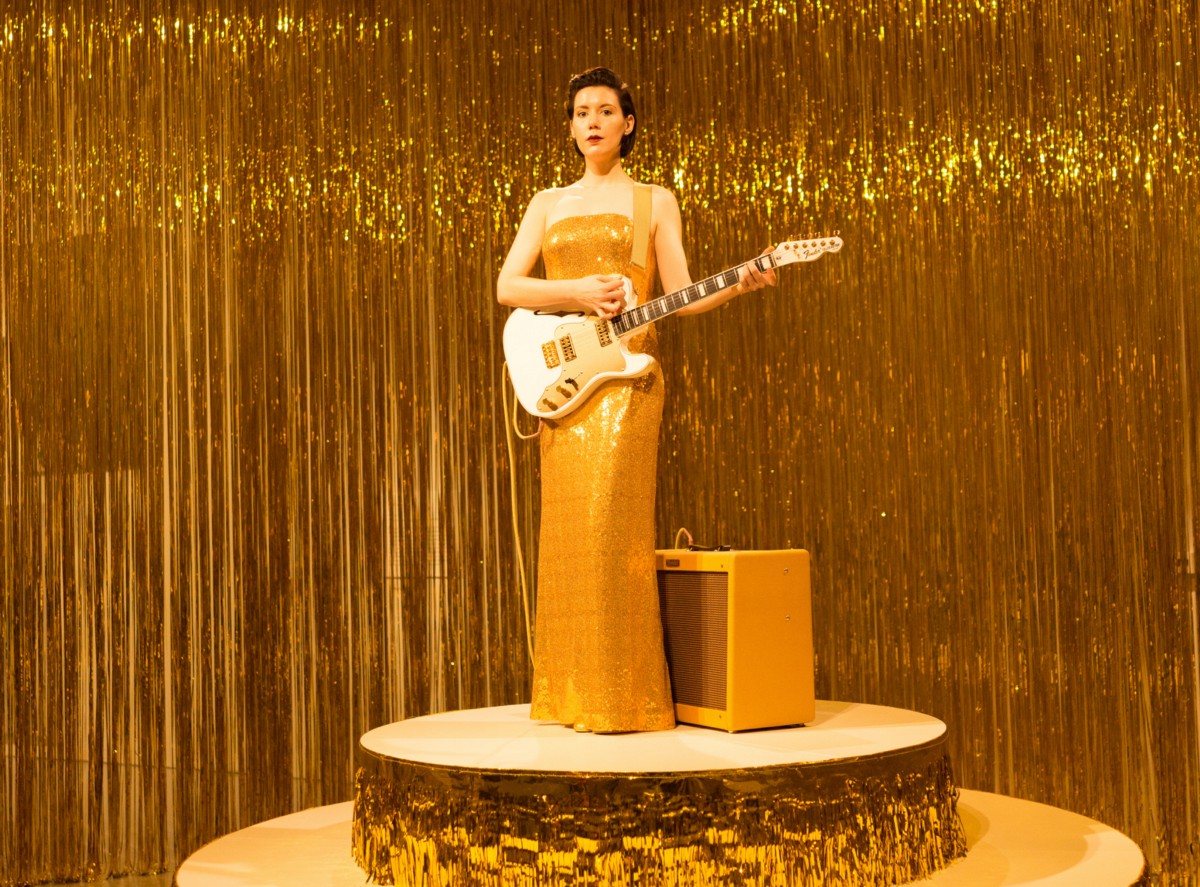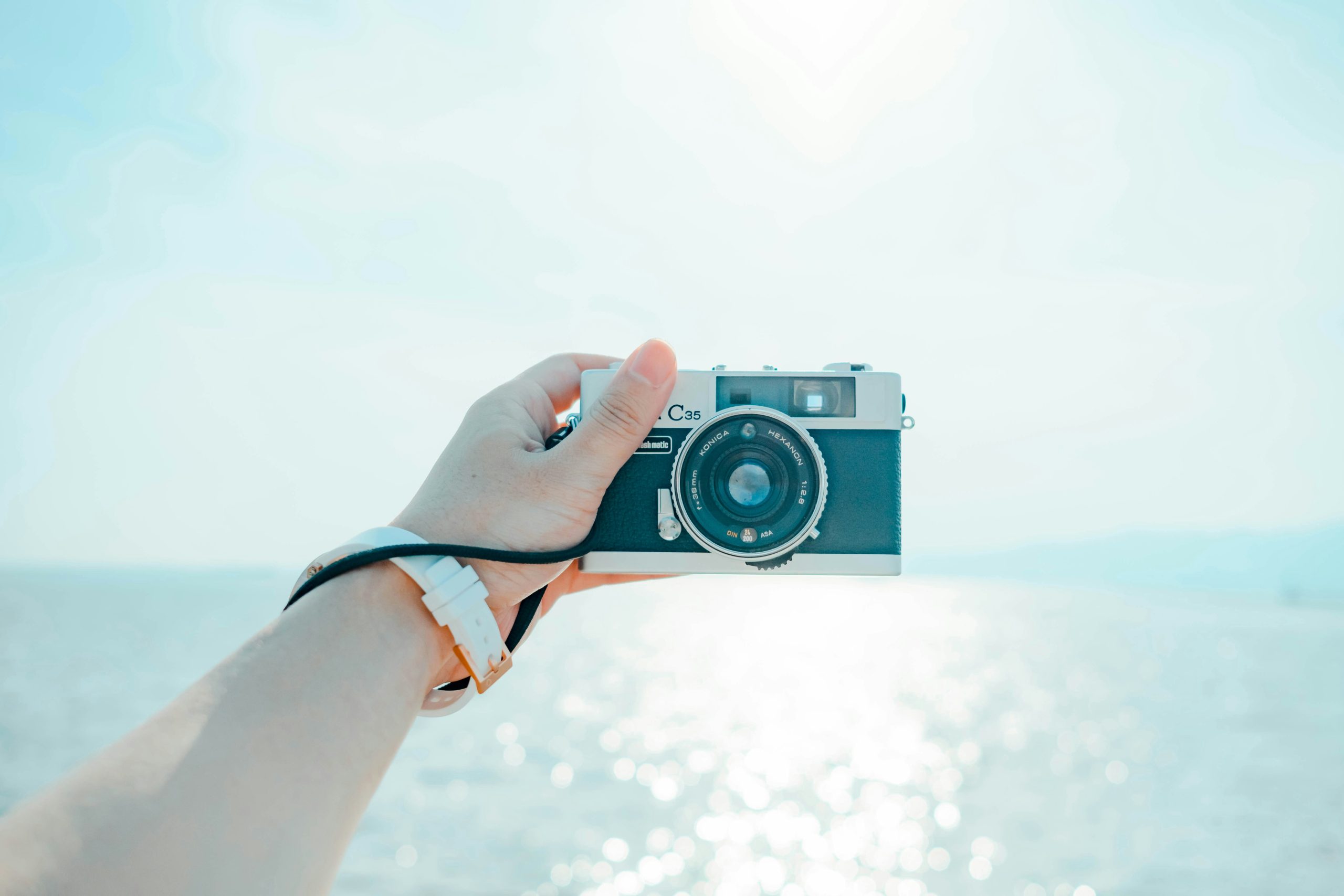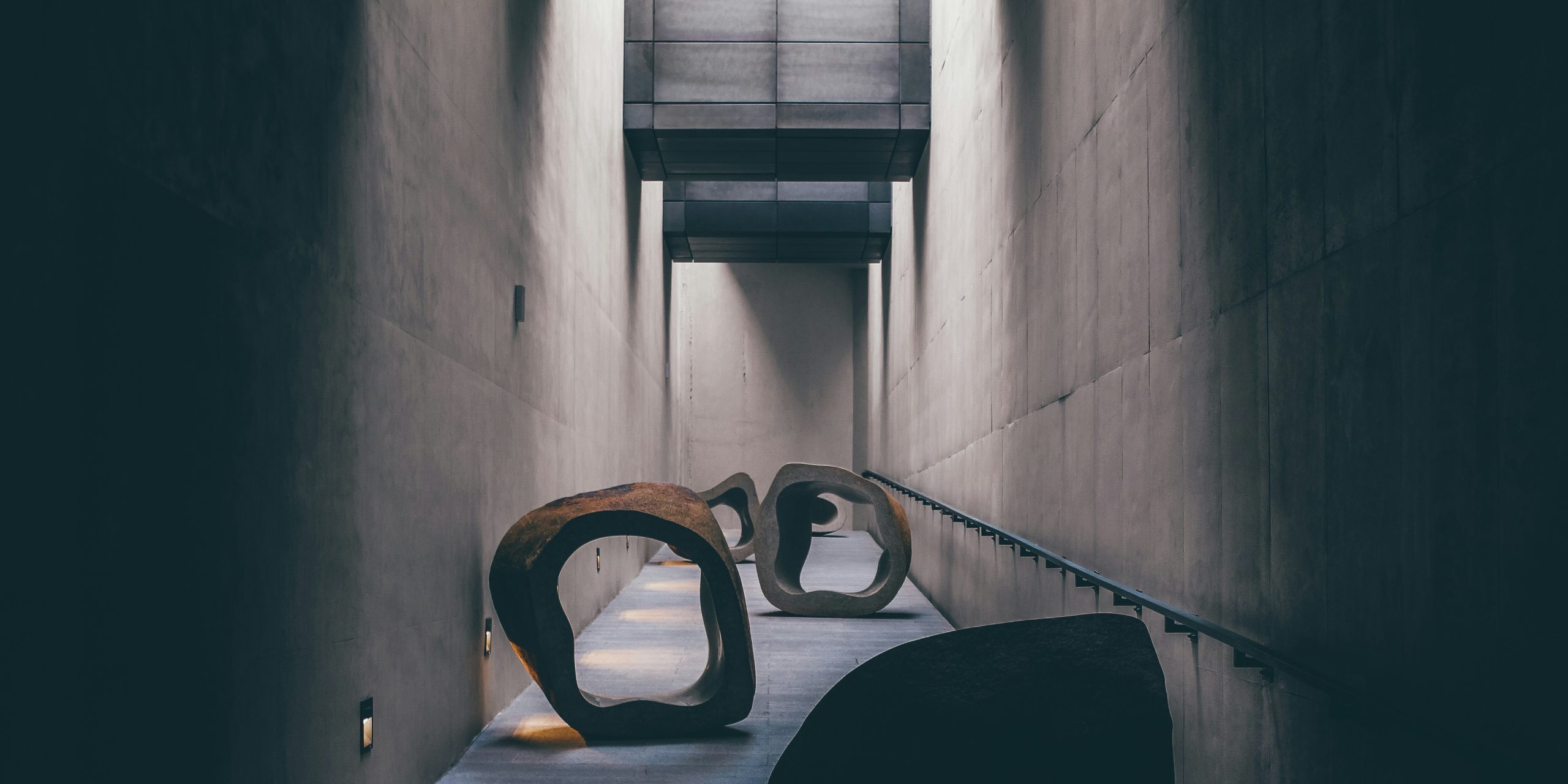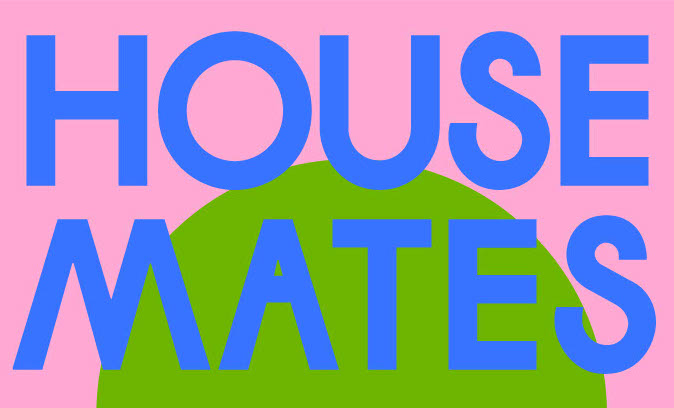Books & Culture
Fourteen Women Playing One Guitar
Taking my broken heart to see Ragnar Kjartansson’s “Woman in E”

It is the year I own a bed again. The year I return to D.C. to work in an elementary school, tired and overextended, resentful and broke. The year all of my belongings do not fit into a suitcase or the corner of someone’s room or one shelf in their closet.
It is the year I do not live near ocean or mountains. The year a boyfriend from a decade earlier develops a brain tumor and I don’t know what to say, so I say nothing. It is the year I forget to make resolutions. It is the year I categorize things oddly — my books by thickness, my shirts how Marie Kondo says to, every photo I own in a box under my bed with a suitcase I do not use.
During a snowstorm that shuts down the city streets and businesses and government for a week, I meet a man. On our first date there are still two cars stuck in the snow at the end of my one-way street and one car stuck at the end of his, so we go for a walk and bring a bag of birdseed my mother gave me as a Christmas present. She said it would bring me good luck if I spread it on New Year’s morning and I’d forgotten to do it. I’ve heard birds were the animals everyone forgot about during winter storms and making food available for them could save their lives. I’m a week late on luck, but maybe I can help the birds. I want to walk and leave seeds in a few different places, but my date takes the bag from my hands and dumps all of it under a tarp by the apartment building next to mine. “There!” he says, carelessly, like he’s just pulled a stray hair from my sweater. Next, he steers us five blocks away to an apartment where he used to live. I am shivering by then, but we stand in the snow as he points out all of the ways it is different than before. I don’t tell him I can’t feel my toes. I don’t tell him that I have not lived anywhere for more than 12 months in the last 11 years.
It is the year I say what I feel as little as possible in hopes of feeling nothing.
One month later, I can watch him disappear in front of me. His shining hazel eyes turn black through some magic trick I cannot replicate. By February I do not know what to expect when my passenger side door opens and he gets in. The days he is happy to see me are good. The days he is indifferent — quiet and impatient when I ask simple things, like how his day was — embarrass me, like someone has invited me to their home, but hopes I will not accept the invitation. I always accept.
I tell him these things only once, when he sits across from me in an armchair in March and asks, “How are you feeling about this? You and I?” He is the one who needs to talk about feelings. I say this and catch him off guard. It is the only time I can remember surprising him. He had; he has become accustomed to my predictability. I am medicated and in therapy three times a week. I am committed to us fucking other people. I am not trying to be good. I am not trying to be anything.
I am not trying to be good. I am not trying to be anything.
Later, a mutual friend will tell me how he told her he could not date anyone who was nice to him. Another mutual friend will call him Aladdin: the man who shows you the world and then pushes you off the carpet.
When I say I am going home to cry he says “Please don’t” and pulls me into his lap. I tell him he is a good man, what with all this honesty. I tell myself how sincere he must be, to care that I would cry. This is my magic trick.
In early October, I go with a friend to see Icelandic performance and visual artist Ragnar Kjartansson speak at the opening of his exhibition at the Smithsonian Hirshhorn Museum. He walks the floors of the museum first and I take a photo of him from behind, surrounded by fans and walls covered from floor to ceiling in his paintings. In a basement auditorium he speaks about his creative process, his thoughts on the Icelandic art scene as its developed over the last three decades, and his relationship to his mother, whom he films spitting on him once every five years for a video installation in the exhibition called Me and My Mother. At the end of the evening I have jotted a single note into my phone, attributed to Kjartansson: The defiant act of suffering without dying. My friend took something else from the artist. As we are leaving, she tells me that she is done dating, is going to focus on herself and whatever she wants.
I remind her that I stopped dating, for years at a time, before I picked up my life and moved across the continent and up into a new country for a man. “Look how well that ended for me,” I tell her, laughing.
“Wasn’t it good to live that life, though?” she asks.
It is the year I insert my pain in odd places, annoying myself most of all with the audacity of it.

In Ragnar Kjartansson’s performance piece Women In E, a woman in a floor-length gold sequined dress holds a guitar and stands on a revolving stage with an amplifier. The space around her is a circle of thin gold streamers hanging from the ceiling. The woman strikes an E chord, over and over, for two and a half hours at a time. When you ride the elevator up to the exhibition on the second floor, it is the only thing you can hear; a single, drawn-out chord. Closer, the woman’s arm moves in a slow oval, striking every fifteen or twenty seconds and letting the noise fill the room before she aims again. The women choose how long, exactly, between the chords, but it is never fast. It is slow and echoes. When one woman’s time is up, it is a new woman’s turn to go on the pedestal. The transition is so seamless that there is only ever one missing E chord between them. The friend who is done dating is a curatorial assistant at the museum and helps the women transition between shifts. She tells me they share one small dressing room they’ve built into the walls of the museum. The space will be destroyed when the exhibition closes, so they leave notes and write quotes for each other on the white plastered walls. They become close, these fourteen women. You can’t see the door unless you know to look for it.
I visit the exhibition multiple times and always stop at Women in E. Sometimes I sit just outside of the gold ring on a bench to watch people unsure of whether they can go inside to see the performer. I visit and enter the ring to see if any of the women will look at me.
In November, I let a man I like hold my face hard and say “Look at me when I’m fucking you” and it feels good. It feels good to be told what to do. It feels good to be able to do something so easily. He is honest about who he is and what he wants and I tell myself I am listening. I count bruises on my ass and my thighs and my breasts as proof that someone wants me.
He says he has waited a long time for this, but he has not.
I tell myself this is a kind of pedestal.
On Christmas, the new girlfriend of the boyfriend I moved across the country for posts a photo and calls him her soulmate. This is something I never dared to name him during the four years we loved each other. She did it within a few months. He is hers now and seems happy. They like the same things, do the same things, are from the same country. She looks easy. She looks nice.
I am not easy. I am not necessarily nice. I like books more than exercise or other people. I am the person on his couch when he comes home and the person who does not get out of bed at all some days. I imagine the conversations he must have now — how it never quite fit with me, how he almost gave up cycling on my behalf, how often I asked him to travel. How it feels right with her. How easy it is after me.
At a Christmas party we went to two years into our relationship his married friend talked about meeting his wife and said, “When you know, you know. Right?” and looked at him for validation. Looked at us together. Nicholas said nothing. Could not even nod his head. I sat on a wooden stool surrounded by mostly strangers and wondered if it might somehow tip over so I could look as embarrassed as I felt and have the room understand without feeling so sorry for me.
I am not easy. I am not necessarily nice. I imagine the conversations he must have now — how easy it is after me.
I went to every one of his cycling races while I lived with him; he rarely read my writing. I considered these our “things.” His cycling, my writing. Once, when I asked if I could read my writing out loud, he said it sounded like I was casting a spell. I kept a death-grip on that sentence for months, repeating it over and over, refusing to release the idea that I had bewitched him, finally. That my words could do something for us.
Our relationship ended over many months and planes and ferry rides. It was only ever me on the airplanes and ferries; he metaphorically and literally refused to leave the Canadian island we lived on. Finally, just as the Pacific Northwest was beginning to become warm again, I took a final ferry and plane away, back to the East Coast. I traveled as often as I could to distract myself, desperate to reclaim some part of what I used to love. It became unbearably painful to look at glacial water in Montana and European cobblestone in Lisbon and hulking mountains in Colorado and have everyone tell me how lucky I am to be seeing all this when all it feels like is a reminder of the person I loved so much more.
I move back in with my parents for three months, just before moving on to D.C. I write obituaries for a Canadian newsgroup out of a Buffalo, New York office. My boss instructs me that, should anyone ask where in Canada we are located, I must respond, “Near Toronto.” Sometimes people from Vancouver Island call and I tell them I used to live up-island in Nanaimo. Eventually people from Vancouver Island start to ask for me specifically. The crematorium workers and funeral home directors like me. I add “hey?” to the end of my sentences and know how to pronounce all of the small island towns. During bathroom breaks I sit on the toilet and quietly recite the names of places Nicholas and I had been together, afraid I will forget them, then wash my hands like they are tiny, fragile things. It is the year I stop speaking to him.
It is the year I find out I have developed an irregular heartbeat — shocking my childhood pediatrician who generously offers to see me without insurance. “You never had this before and it’s not in any of the medical records you had forwarded here,” he tells me.
It is the year I learn my heart has actually broken.
The doctor gives me a prescription for antidepressants and tells me I am far too pretty to be alone. It’s really a shame, he says.
If I had been a boy my name would have been Peter. Peter is derived from the Greek word petros, meaning “stone” or “rock.” If I had been a boy, my mother would have had three sons and they would have stopped trying to have more children. My mother tells me how much she wanted me to be a girl.
With age, I want to know what it might means to be male. To live Peter’s life. Hard and steady and rock-like.
My name means “worthy of love.”

In the last few days of Kjartansson’s exhibition, just before the new year, I go to the Hirshhorn to watch all 64 minutes of Visitors. In the installation, the artist and seven other musicians play a gospel dirge inside a decaying mansion. They are each in their own room of the house and each projected onto one of eight screens. A ninth screen shows the outside of the mansion and an old man sitting on the porch cleaning a canon. Halfway through the piece, he lights it and it explodes, the sound carrying through each screen at different volumes depending on where the musicians are in the house.
The lights are dim. The piece makes the room vibrate with sound, makes the museum space feel like an organ. Depending on which screen you are in front of, you hear the voice and instrument of one musician more than all the others.
I sit on the floor of the museum between a screen showing Ragnar playing guitar in a bathtub and a screen with a woman playing the cello. I sit between the legs of the man I am fucking. I want to lean against his chest and I do not. I want to cry and I do not. Throughout the piece, in between crescendos of chorus, they repeat the same line: Once again I fall into my feminine ways.
It is the year I can control my emotions almost completely.
Throughout the piece, in between crescendos of chorus, they repeat the same line: Once again I fall into my feminine ways.
Before we leave, we go to see Women In E together. There is a woman I haven’t seen perform yet. As she turns, she stares at me until the pedestal spins her too far around to maintain eye contact. I wonder if I imagine it, but when I ask hours later, the man I am with tells me, “I saw that. She did.”
I do not visit again.
A few weeks pass and this man tells me we cannot sleep together anymore. There are many reasons and, to him, it is important to maintain the friendship that started this. I have stopped respecting his privacy and started stealing his time, he tells me. I picture a robber in all black with a sack full of clocks and laugh before I hang up on him.
He has a tattoo of a lock behind his right ear and there is no key anywhere on his body. He has a tattoo behind his left ear that says FIX ME and I understand the joke finally.
It is the year I do not have to be told and told again when someone does not want me.
Visitors ends with all of the artists abandoning their instruments and exiting their rooms, one by one. Ragnar has been sitting, naked, in a bubble bath with a guitar and all of the bubbles are gone now. He rises, grabs a towel. They meet in the entryway of the mansion and open beers and light cigars. They keep singing and walk toward an open field, repeating “Once again I fall into my feminine ways.” They sing in chorus until they are out of earshot and, finally, out of view entirely.
Kjartansson’s ex-wife, Ásdís Sif Gunnarsdóttir, wrote the song about their divorce. He performs it without her.
The man I met during the snowstorm moves to the West Coast to be with another woman.
The man I was sleeping with moves to the West Coast to be with another woman, too.
The exhibit closes just after the new year. My friend who works at the museum can finally divulge one of its secrets: the stage turns on with a remote control they kept hidden inside of the amplifier. The piece is reliant on the flick of a switch.
It is the year I depend on art more than people to heal me.
It is the year I think I want to be put on a pedestal.
Months later, I meet one of the Women in E performers at a party. When I ask about any discomfort from playing the same note for hours at a time she tells me that what she found most unpleasant was when people viewing her performance spoke about her like she couldn’t hear them. That sometimes people stood close and sang to her. That she could hear one of Ragnar’s other pieces while she played and it haunted her.
I know the piece she means — it is the one I stayed in the room for less than two minutes to listen to — and we deliver the single line it repeats to each other: Sorrow conquers happiness.








